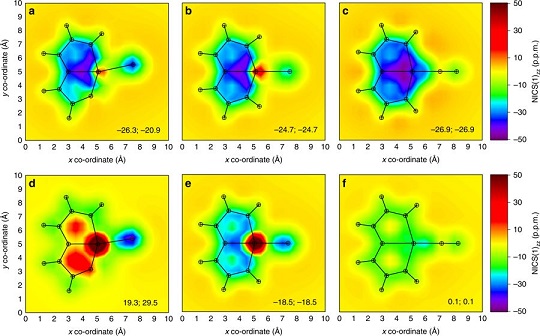Adaptive aromaticity in S0 and T1 states of pentalene incorporating 16 valence electron osmium
Submitted by Jun Zhu on Sat, 09/01/2018 - 15:55
Aromaticity is a fundamental chemical concept of ever-increasing diversity. According to Hückel’s and Baird’s rules, cyclic conjugated species with 4n+2 π-electrons are aromatic in the singlet electronic ground state (S0) and antiaromatic in the lowest triplet state (T1), and vice-versa. Thus, species with aromaticity in both states have not yet been reported.

